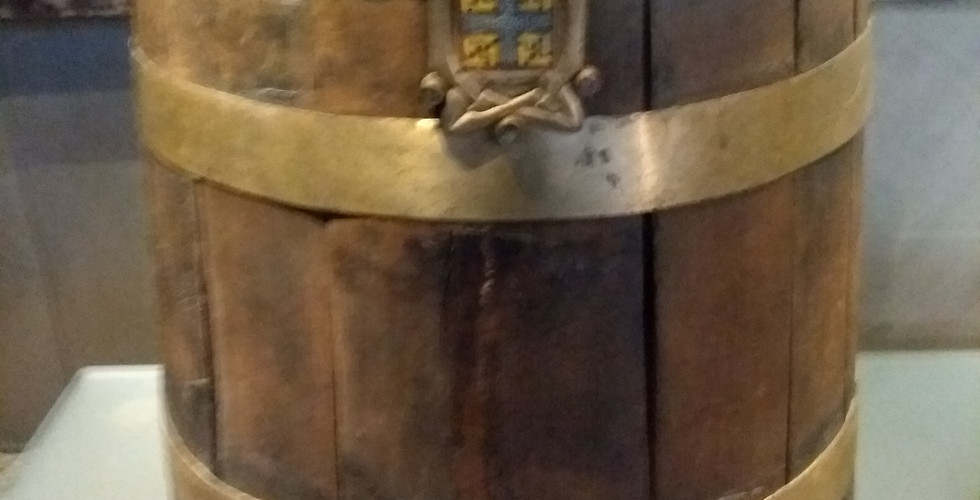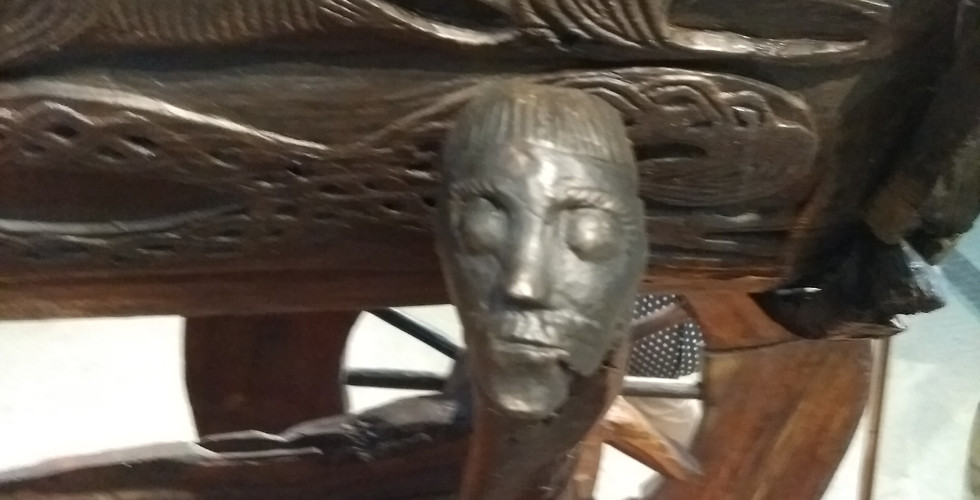The Viking Ship Museum #TheGreatVikingHoliday Part I
- Gear & Graith

- Mar 2, 2019
- 4 min read
Updated: Jan 27, 2020
After Borre we continued our journey north to Oslo, home of the Viking Ship Museum.
As well as the Goskstad Ship, the museum also houses Oseburg Ship, the Tune Ship and many of the items found in the burials, so it was a massive tick on my bucket list!

The excavations of these boat burials really show the hit-and-miss nature of archaeology in its early days.
The Tune Ship was the first Viking Ship discovered in 1867 by archaeologists, but it seemed to have already been plundered and was severely damaged when it was removed, and what survived of the wooden goods and the inhabitant were lost before it arrived at the museum,

The Gokstad ship fared better. As well as being in pretty good condition when discovered, it yielded a wealth of artefacts, many of which are on display. The Gokstad ship sits in it's own room coming off the main gallery, and it was a very strange feeling seeing it on display. I always thought it would be like meeting your favourite movie star, but having sailed on Gaia only days before, it felt like meeting an old friend and I got very emotional!
If you flip back to photos of Gaia in my earlier post, I'm sure you'll agree that her shipwrights did an outstanding job bringing this beautiful ship back to life.
As well as ship, the museum had a number of other artefacts on display, including some belt fittings, one of the 32 shields, fragments of a gaming board & one of the gaming pieces, a tent-like structure made from timber in which the chieftain lay just behind the mast, some small rowing boats, a back-pack and a spade. There's much more to see and many of the other objects still survive but are in storage.

I also got to meet the man himself! You often hear it said "people were smaller back then", but from his surviving bones it's believed the Gokstad Man stood at around 1.9m/6'3", well above average height even by today's standards.
Displaying human remains is always a bit controversial, but I think he would have approved. Even though we don't know his name, his fame lives on, and his burial strongly echoes another line from the Old English Epic Beowulf:
"They stretched out their beloved lord in his boat, laid out by the mast, amidships, the great ring-giver" (lines 34-36, Beowulf - A Verse Translation, Seamus Heaney)
As if the Gokstad burial wan't impressive enough, now we come to the Oseberg Ship. Wow.

The ship itself is slightly shorter at 21.5m, but features impressive relief carving, and the prow and stern call for another Beowulf quote!
"A ring-whorled prow rode in the harbour, ice-clad, outbound, a craft for a prince." (Heaney, Ibid)
It might be fit for a prince, but this ship was the final resting place of two women. One was in her 80s, the other perhaps between 50-55 years old. They were both well dressed, one in a dress of blue wool, the other dress of red diamond-twill wool. The burial featured a number of other textiles including silk trims, a tapestry and patterned woven rugs from Asia.
Along with all that, other artefacts included cooking & feasting equipment, textiles tools, several combs, a dog's collar, a box chair, carts, sledges, decorated chests, and much, much more!
The grave mound dates to around 834 AD, but at first it had only been partly buried, with the front of the ship on view for a number of years before being finally covered over (Dr Stephen Harrison, Glasgow University, from the Hakon Hakonsson Lecture 2018). Perhaps this was to allow people to visit the burial, or to make a symbolic statement in the local community. What ever the reason, it reminds us that burials were very complex rituals, as they still are today.
It has been suggested that this was the burial of Asa, the grandmother of Harald Fairhair - the man later Icelandic Sagas portray as the first King of Norway. Ultimately it's unknowable, but whoever was laid to rest in the mound was clearly very important!
Post-Script
I've been sitting on this post for a while as the Oseberg ladies have really made me reflect on the controversies around the "Women Warrior of Birka", BJ581.
I'm not going to talk about all that here, but I just wanted to make a general comment. Whilst all media attention for BJ581 has been great for the public awareness of Viking Studies, and whilst I'm sure that's not the intent of the Birka Study, a lot of the Media Coverage gives the impression that women in the Viking Age can only be successful and worthy if they behave like men.
Some women undoubtedly broke away from the usual female roles during the Viking Age, and it's absolutely worthy of attention, but we shouldn't let it take value away from all those women who didn't and were successful and highly regarded.
In modern and contemporary terms, Oseberg is the richest, most elaborate burial known from the Viking Age to date. It is huge, iconic and awe-inspiring. And it's not the burial of a man, but two women. Ladies of Oseberg, I salute you!














































Comments